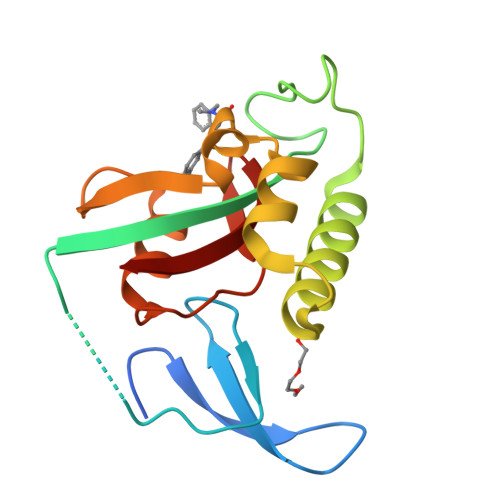Discovery of Cell-Active Phenyl-Imidazole Pin1 Inhibitors by Structure-Guided Fragment Evolution.
Potter, A., Oldfield, V., Nunns, C., Fromont, C., Ray, S., Northfield, C.J., Bryant, C.J., Scrace, S.F., Robinson, D., Matossova, N., Baker, L., Dokurno, P., Surgenor, A.E., Davis, B.E., Richardson, C.M., Murray, J.B., Moore, J.D.(2010) Bioorg Med Chem Lett 20: 6483
- PubMed: 20932746
- DOI: https://doi.org/10.1016/j.bmcl.2010.09.063
- Primary Citation of Related Structures:
2XP3, 2XP4, 2XP5, 2XP6, 2XP7, 2XP8, 2XP9, 2XPA, 2XPB, 3ODK - PubMed Abstract:
Pin1 is an emerging oncology target strongly implicated in Ras and ErbB2-mediated tumourigenesis. Pin1 isomerizes bonds linking phospho-serine/threonine moieties to proline enabling it to play a key role in proline-directed kinase signalling. Here we report a novel series of Pin1 inhibitors based on a phenyl imidazole acid core that contains sub-μM inhibitors. Compounds have been identified that block prostate cancer cell growth under conditions where Pin1 is essential.
Organizational Affiliation:
Vernalis (R&D) Ltd, Granta Park, Great Abington, Cambridge CB21 6GB, United Kingdom.


















